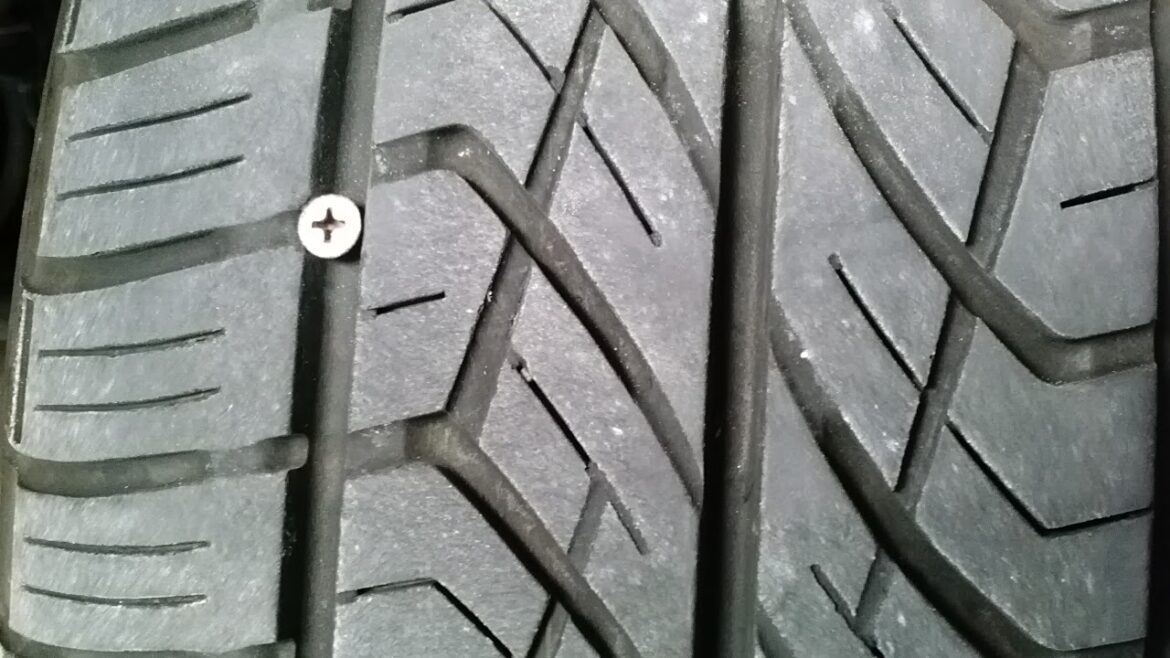Whether or not you can still drive on with a screw in your tyre depends on various factors. If you have a puncture, there are some rules of thumb you can use to guide you. You also have to weigh up whether to go for repair or buy a new one. We give you some tips on how to do this.
Continue driving with a screw in the tyre: This is what you should do at the beginning
Injuries in a car or motorbike tyre caused by screws and nails do not necessarily mean its end. In some cases, a repair may also be worthwhile, but this should always be thought through carefully beforehand.
- If you have driven a pointed object into the tread of your tyre, you must first observe a very important rule of thumb: Leave the object stuck in the tyre! This way you guarantee that the hole stays closed and avoid further damage to the tyre tread by pulling it out unprofessionally.
-
Instead, make an appointment with a qualified tyre repair shop as soon as possible to discuss whether it is better to repair or replace the tyre. You should always leave a good assessment to the professionals.
- If you want to continue driving before the workshop appointment, it is important to check the tyre pressure at short intervals and adjust it again and again if necessary to avoid flat tyre damage.
- If your tyre is fully recovered after repair, you are required to check that the tyre still conforms to the specifications that were in place before repair before continuing.
- Many motorists reach straight for the puncture repair kit from the boot when their tyre is damaged. However, you should be careful here. After using a tyre sealant, a professional repair in a specialist workshop is no longer permitted for technical reasons.
- This also applies to emergency sealants. Before using such aids, you should therefore carefully consider whether the tyre is to be replaced or repaired later.
When a repair makes sense: screw in the tyre
In principle, most tyre damages can be repaired. You should consider having your tyre repaired at your specialist garage if …
- .. the damage to the tyre was only discovered shortly after purchase and the air pressure was categorically checked, flat rolling damage can be ruled out and the repair is carried out promptly.
- .. no emergency repair has been carried out on the tyre, for example with puncture spray.
- .. a good and suitable spare tyre, e.g. abroad, cannot be obtained at that moment.
- .. only certain areas of the tyre are affected and the damage is kept within limits.
- .. the remaining tread depth is still deep enough, or the tyre as a whole is not yet too old.
- Your car has a tyre pressure monitoring system (TPMS) and, in the event of a puncture, it would be necessary to replace all the wheels or two wheels on one axle in order to ensure that the technology is functioning properly. A pressure control system in fact checks the air pressure via the speed and is appropriate for a uniform diameter of the tyres.
Estimation of the damage is decisive
Whether a tyre can be repaired after damage depends entirely on the type of damage and cannot generally be answered. Always leave this decision to staff at a qualified specialist workshop.
- Damage to the inside of the tyre, cracks and holes in the tread larger than 5 millimetres, or a screw in the sidewall are usually indications that repair is no longer an option. Here you may have to go for a new purchase.
- Be especially careful and cautious with high-speed tyres. Even when properly repaired, there is an increased risk with Class V (up to 240 km/h), Class W (up to 270 km/h) and Class Y (up to 300 km/h).
- Additionally, bear in mind that repairing the tyre can be costly and take some time. It can take as little as two hours for a professional damage assessment, disassembly and final repair using hot or warm vulcanisation.
- The cost of closing a nail hole, for example, is around 20 to 40 €, depending on the technique.
